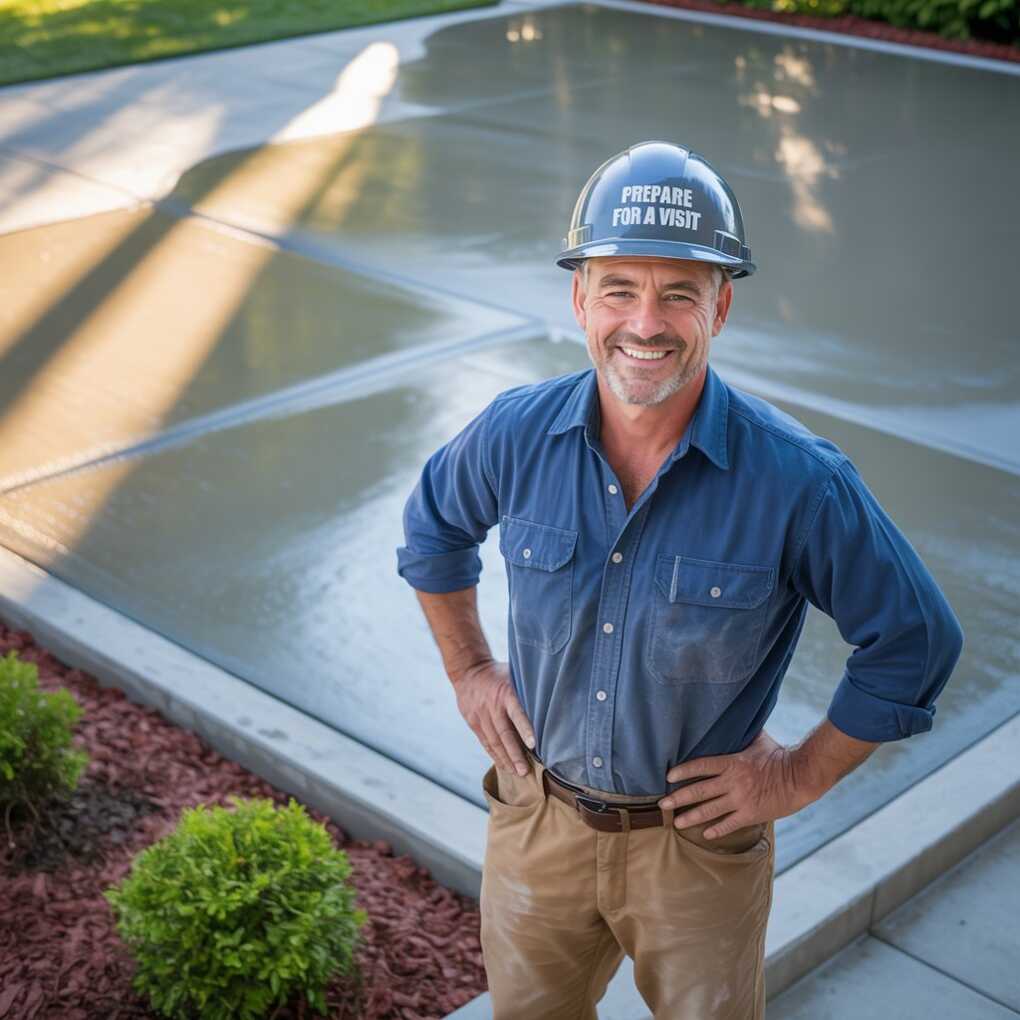Welcoming a concrete contractor to your property isn’t just about marking a date on your calendar—it’s about creating a smooth and productive experience from the very first moment they arrive. Whether you’re repairing sidewalks, installing a new driveway, or upgrading your patio, preparing in advance ensures that both you and the contractor are aligned in expectations, safety, and workflow. Taking a few thoughtful steps before your visit can help prevent miscommunication, eliminate unnecessary delays, and make your project feel less stressful.
We will explore how proper preparation allows your contractor to focus on delivering quality results without avoidable complications. With your home or business site ready and your questions in mind, you can help create an environment that supports efficient progress and long-lasting results. From safety to scheduling and planning, a visit from a Concrete contractor in New York City requires attention to detail, and we’ll walk you through each part of the process with care and clarity.

Steps to Get Ready for Your Concrete Contractor’s Visit
Evaluate the Work Area and Define Clear Boundaries
Before your concrete contractor arrives, it’s helpful to walk through the site where the work will be done and identify any areas that might require special attention. Are there plants, furniture, or decorations that need to be moved? Are there any underground utilities or sprinkler systems nearby that could be impacted during excavation or concrete pouring? Marking off areas that are not to be disturbed, such as garden beds or existing structures, will help the contractor know what to avoid.
If the job involves sidewalk repairs or driveway expansion, it’s also wise to speak with any neighbors who might be affected, especially if equipment or material deliveries might block access. By clarifying boundaries, you also help the contractor give a more accurate estimate of time, labor, and materials. Photos or sketches of the desired changes can also be valuable, especially if you’re referencing design preferences. A well-prepared site sets the tone for an efficient and respectful collaboration.
Remove Obstacles and Secure the Surrounding Environment
Contractors work more efficiently when the space is clear and safe. On the day before their arrival, remove any personal belongings, garden hoses, outdoor furniture, or vehicles from the work area. If the job site is near your home entrance, consider designating a new access point to avoid disrupting the contractor’s workflow. You may also want to communicate with your family, roommates, or tenants about the upcoming work to ensure everyone is aware of possible noise, dust, or temporary path closures. If you have pets, make arrangements to keep them away from the work zone for their safety.
Depending on the location of the work, consider setting up temporary signage or cones to help guide foot or vehicle traffic around the area. If the work involves mixing or cutting concrete, there may be dust or debris. Covering windows and nearby delicate surfaces can help reduce the need for cleanup afterward. A secure, clutter-free environment allows your contractor to focus entirely on the task at hand.
Prepare Access for Equipment and Materials
Concrete work often requires the use of heavy machinery, mixers, wheelbarrows, or delivery trucks. Ensuring clear access to the site can save valuable time and avoid complications. Consider which route the crew will take to bring in materials—whether from the street, a side alley, or through a garage—and remove any obstacles that may block those paths. If street parking is limited in your neighborhood, it may be helpful to reserve nearby spots in advance or notify your local municipality if a permit is required. Some concrete deliveries are time-sensitive, particularly when mixing must occur onsite.
A few minutes of delay caused by blocked entrances or vehicles in the wrong spot can impact the final result. Also, please notify the contractor in advance if there are any access constraints, such as narrow gates, steep driveways, or overhead tree branches. With well-planned access, you allow the entire process to run more fluidly and prevent last-minute scrambling.
Review Project Details and Confirm the Schedule
A productive visit begins with a shared understanding of what needs to be done. Take a moment before the contractor arrives to gather your notes, measurements, and any questions you may have. If you have any previous repairs or issues that need to be addressed—such as drainage problems, surface cracking, or uneven settlement—please note them so they can be reviewed during the visit. Contractors appreciate clients who are ready to talk specifics, as it allows them to assess the project more accurately.
Confirm the timeline for the work, including start and end dates, as well as any milestones such as inspections or curing periods. If your schedule changes or you have limited availability during certain hours, communicate this. It’s also wise to discuss how communication will be handled throughout the project, whether through phone, email, or in-person updates. A clearly outlined schedule and mutual understanding help avoid confusion later on and keep the project moving on track from day one.
Being ready for a visit from your concrete contractor does more than smooth out logistics—it sets the stage for a positive experience and lasting results. From preparing the worksite and confirming access to discussing project details and understanding financial expectations, each step builds a strong foundation for collaboration. Contractors appreciate working in environments where the client has taken time to think ahead and where communication flows easily.
Conclusion
By taking a proactive approach, you not only help your project move forward efficiently but also help prevent surprises that could affect timing or quality. A thoughtful start leads to a successful finish, and with these preparations in place, your sidewalk, driveway, or concrete upgrade is well on its way to becoming a reality.
